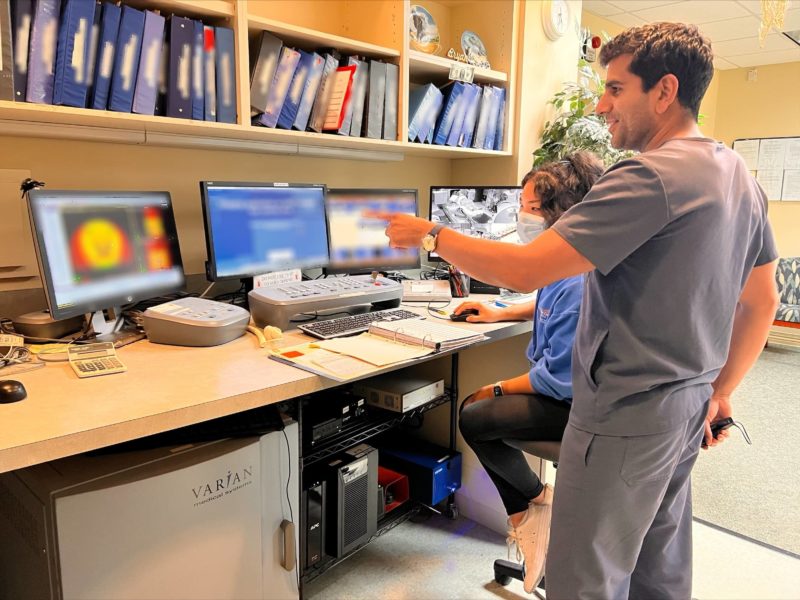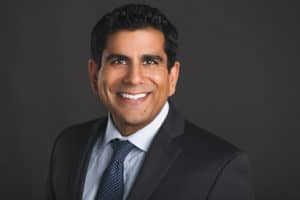Know
Local oncologists talk cancer ‘moonshot’ initiative

President Biden recently affirmed a goal to cut cancer death rates by at least 50% and transform the diagnosis from a death sentence into a manageable chronic disease.
Local oncologists believe both are attainable, but it will take a nationwide collaborative effort.
In a speech last month at the John F. Kennedy Library and Museum in Boston, the president said he is attempting to “supercharge” the cancer moonshot initiative. The location was symbolic as Biden hopes to dramatically accelerate the nation’s progress in the fight against cancer – as Kennedy pledged to accelerate the country’s race to the moon in the 1960s.
While the death rate from cancer has fallen by over 25% in the last 25 years, it remains the second leading cause of death for Americans behind heart disease, according to the Centers for Disease Control.
Dr. Rahul Bhandari, a radiation oncologist with Tampa Bay Radiation Oncology, said it is nearly impossible to say that doctors and researchers will find a cure for cancer anytime soon. However, he believes halving death rates in the next 25 years is possible.
“He’s extending it that long because it will take that long,” said Bhandari. “At least.”
One of the overarching goals of this generation’s “moonshot” initiative, explained Bhandari, is taking federal actions to put stakeholders across the nation on the same page – from screenings to diagnosis to treatments.
October is National Breast Cancer Awareness Month, and he noted that survival rates vary significantly across states and communities. Rapid technological advancements should help, but Bhandari said many patients and physicians in small towns across America remain unaware that new imaging and treatments exist.
“There’s no collaborative effort nationally where everyone is on the same page,” he stressed. “That’s a good start, to even have that conversation of how do we reduce this – because right now, it’s an acute killer.”

Bhandari said “it’s way too soon” to discuss a cure for cancer.
While Bhandari said “it’s way too soon” to discuss a cure, he believes prolonging life expectancies following a cancer diagnosis is doable, as with diabetes. He said that once was also an acute killer until scientists and physicians focused their efforts and the government directed more funding to manage the affliction.
Dr. Stacie Stapleton, division chief of oncology and director of pediatric neuro-oncology at Johns Hopkins All Children’s Hospital, called improving the quality of life for cancer patients and long-term survivors “very attainable.”
She noted that chemotherapy drugs are increasingly taken orally and at home. Meanwhile, Stapleton said chemo protocols also have fewer side effects, supportive care continues to improve and more practitioners specialize in symptom management.
“Cancer is the most common cause of nonaccidental death in children,” said Stapleton. “Improving survival and quality of life is the main goal of most all major children’s hospitals and academic institutions.”
Stapleton said St. Petersburg’s All Children’s Hospital utilizes teams of researchers, scientists and physicians dedicated to pediatric cancer and “hope to find a cure for some of the more common types” that occur in childhood.
Actions Biden listed to meet the initiative’s goal include increasing the availability of research data and providing easier access for patients to enroll in clinical trials through Trials.Cancer.gov. Stapleton said the death rate should decline as health officials identify more molecular targets and create related drugs.

Dr. Stacie Stapleton, division chief of oncology and director of pediatric neuro-oncology at Johns Hopkins All Children’s Hospital.
“Adequate and available funding is crucial to achieving the moonshot,” she added. “Better technology means more information and advancement, but finding a cure to all childhood cancer will take many researchers working together on all continents.”
Bhandari said the moonshot’s goals would take 25 years due to a lack of education and resources, especially in small and poor communities. He said one of the first priorities is to create a national standard for every American to get the same screenings at specific times.
The rates will not decline, explained Bhandari, until people proactively take care of their health. However, he said it was health and government leaders who have failed to provide the public with vital information and a sense of urgency.
For example, Bhandari said a researcher could identify a groundbreaking new drug or treatment and release the results, but most of the public would likely remain unaware.
“There’s no integration,” he said. “There’s no set of communication of data sharing across the world.”
The lack of education on potential treatments and drugs, said Bhandari, is evident in smaller communities throughout the Tampa Bay region. He noted that some patients must drive 45 minutes from their hometowns for six weeks to receive radiation treatments.
However, Bhandari said Tampa “is pretty advanced” and home to several cutting-edge health systems. He added that the area also has a preponderance of young physicians – himself included – that strive to provide the newest treatments and technology.
At the opposite end of the spectrum, said Bhandari, are veteran’s hospitals. He previously worked at a Veterans Administration (VA) radiation center and said those facilities have the oldest machines and technology, are perennially understaffed and typically wait years for critical funding.
Bhandari said one aspect of the moonshot initiative is narrowing the gap between cancer-related resources in population segments.
“Nevertheless, we’re making progress – at our pace,” he said. “It’s happening in microbubbles around the nation, and it’s just not being shared quickly enough with everyone that should know. Cancer is a big killer; why have we not given it more attention and put more money into this?”







